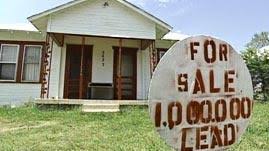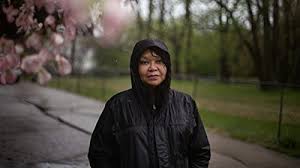 For more information on the topic of residential buildings, check out the University of Michigan’s Center for Sustainable Systems' Environmental Justice Factsheet.
For more information on the topic of residential buildings, check out the University of Michigan’s Center for Sustainable Systems' Environmental Justice Factsheet.
The curated collection below contains 14 videos, 6 podcasts and 4 games/activities. To access the resource, click on the image below the resource title
Videos:
PBS KIDS Talk About: Race & Racism
 Grade Level: K-2
Grade Level: K-2
Duration: 27 minutes 39 seconds
Description: This video from PBS KIDs, provided by PBS LearningMedia, sensitively discusses the topic of racism. Students will learn about the injustices that some people face due to their skin color and why it is important to stand up for these individuals when they are treated unfairly.
Why Climate Change is Anti-Justice | Hot Mess
 Grade Level: 4-8
Grade Level: 4-8
Duration: 5 minutes 10 seconds
Description: This video from Hot Mess by PBS Digital Studios discusses how climate change disproportionately affects low-income communities and communities of color. Students will learn how extreme weather events and hotter temperatures caused by climate change as well as unsafe living conditions impact these communities and how environmental justice can progress in the United States.
Environmental justice, explained
 Grade Level: 4-12
Grade Level: 4-12
Duration: 3 minutes 33 seconds
Description: This video from Grist provides a quick and comprehensive overview of environmental justice. Students will learn how marginalized societal groups are often burdened by environmental hazards, pollution, and climate change.
Environmental Justice- Ecosense
 Grade Level: 6-12
Grade Level: 6-12
Duration: 26 minutes 47 seconds
Description: This episode of EcoSense from PBS discusses the environmental justice movement. Students will learn about the misconceptions people hold about communities of color in terms of their interest in the environment and how members of marginalized communities have fought for environmental justice. Additionally, the video covers the environmental hazards these communities are subjected to and the importance of connecting these communities to nature.
Environmental Justice in DallaS
Grade Level: 6-12
Duration: 3 minutes 48 seconds
Description: This video, provided by PBS LearningMedia, discusses how toxic waste affected a Dallas community. Students will learn how toxic waste impacts human health and how Dallas residents won superfund status to clean up the toxic waste in their community.
Food Justice
Grade Level: 6-8
Duration: 4 minutes
Description: This student-made video, provided by PBS LearningMedia, discusses food injustice and problems with the current food system including: lack of access to healthy food, the higher cost of healthy food, and the fossil fuels used in transporting food. Students will learn solutions to these problems and how people are getting involved to solve them.
Robert Bullard: How Environmental Racism Shapes the US
 Grade Level: 9-12
Grade Level: 9-12
Duration: 17 minutes 28 seconds
Description: In this segment from Amanpour and Company by PBS, Robert Bullard, known as the "father of environmental justice," discusses what the term environmental justice means and what environmental justice and injustice look like. Students will learn how pollution and segregation are linked.
Social Justice and Climate Change | Sinking Cities
 Grade Level: 6-12
Grade Level: 6-12
Duration: Video 1 Social Justice and Climate Change in Miami: 3 minutes 22 seconds; Video 2 Social Justice and Climate Change in NYC: 2 minutes 35 seconds
Description: This set of videos, provided by PBS LearningMedia, discusses the effect that climate change is having on low-income communities of color. The first video from the PERIL & PROMISE series Sinking Cities discusses how “climate gentrification” is impacting low-income people of color in Miami, Florida. The second video from the PERIL & PROMISE series Sinking Cities explains how Two Bridges, a diverse neighborhood in New York City, has experienced flooding during past storms and how sea-level rise due to climate change is expected to have even more severe consequences for the neighborhood in the years to come. Students will learn how these Miami residents are being pushed out of their homes as developers buy up the area to build housing on higher ground for more affluent individuals as the sea level rises and once-coveted homes on Miami's shoreline look less desirable.
What Is Environmental Justice?
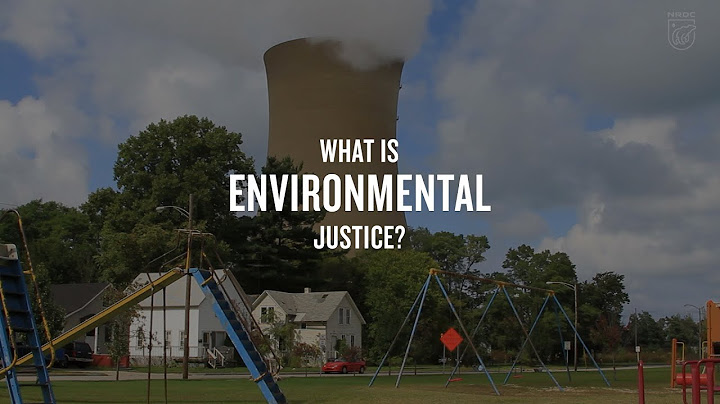 Grade Level: 6-12
Grade Level: 6-12
Duration: 1 minute 56 seconds
Description: This video from the Natural Resources Defense Council (NRDC) discusses what environmental justice is. Students will learn how individuals can combat environmental injustice.
Environmental justice | Social Inequality | MCAT | Khan Academy
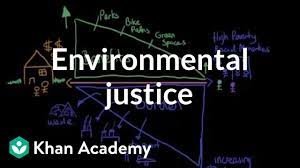 Grade Level: 6-12
Grade Level: 6-12
Duration: 4 minutes 33 seconds
Description: This video from Khan Academy links social inequality with environmental justice. Students will learn how certain groups in society receive environmental benefits whereas others are impacted by environmental burdens.
Solar Stories of Detroit
 Grade Level: 6-12
Grade Level: 6-12
Duration: Videos in the playlist vary in length from 2 minutes 24 seconds to 36 minutes 49 seconds.
Description: This 18 video playlist from Detroiters Working for Environmental Justice (DWEJ) features videos highlighting how individuals in Detroit are working to make solar energy more accessible to underprivileged Detroit residents. Educators can choose one, two, or all of these videos to show. Students will learn how communities are working to advance environmental justice.
Poison Water in Flint Affects Everyone’s Health—Especially Kids | PBS NewsHour
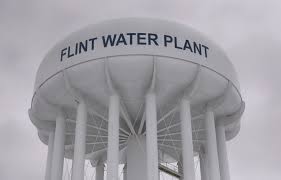 Grade Level: 6-12
Grade Level: 6-12
Duration: 11 minutes 12 seconds
Description: This video from PBS NewsHour, provided by PBS LearningMedia, discusses the Flint water crisis. Students will learn how the Flint water crisis happened, what it meant for the people of Flint, and understand why having clean and safe drinking water is so important.
Environmental Justice-EPA
 Grade Level: 6-12
Grade Level: 6-12
Duration: Videos in the playlist vary in length from 1 minute 52 seconds to 5 minutes 57 seconds.
Description: This 26 video playlist from the EPA is a collection of videos highlighting actions taken by the EPA and marginalized communities to advance environmental justice. Educators can choose one, two, or all of these videos to show their students examples of how communities have fought for environmental justice over the years. Through these examples, students will learn about what kinds of environmental issues marginalized communities face and how important the fight for environmental justice is.
The Geography of Racism: Housing Policy | Retro Report
 Grade Level: 9-12
Grade Level: 9-12
Duration: 12 minutes 42 seconds
Description: This video from Retro Report, provided by PBS LearningMedia, discusses the history of housing discrimination in the U.S. and how past racist housing practices continue to impact communities of color. Students will also learn how integrated housing projects and relocation projects have aided people of color in building better lives for themselves and their families.
Podcasts:
Minneapolis' Bold Plan To Tackle Racial Inequity And Climate Change
 Grade Level: 9-12 (may be suitable for younger audiences with a long attention span)
Grade Level: 9-12 (may be suitable for younger audiences with a long attention span)
Duration: 12 minutes 43 seconds
Description: This episode of Short Wave from NPR discusses how Minneapolis is taking steps to address structural racism and environmental inequity in the city. Students will learn how past racist housing practices in Minneapolis shaped the city’s landscape and left low-income and minority communities more vulnerable to the impacts of climate change.
Many Native Americans Can't Get Clean Water, Report Finds
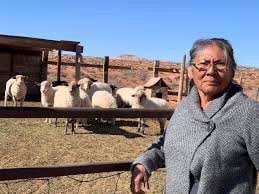 Grade Level: 4-12
Grade Level: 4-12
Duration: 3 minutes 58 seconds
Description: This short NPR story explains how the problem of lack of access to clean water affects many Native Americans. Students will hear from Yazzie, a Native American woman, as she discusses the lack of safe water in her area and will learn that unregulated drinking water poses a severe public health risk to the Navajo Nation.
Cleveland - What Climate Equity Could Look Like
Grade Level: 9-12 (may be suitable for younger audiences with a long attention span)
Duration: 13 minutes 18 seconds
Description: This episode of Shortwave from NPR discusses how the city of Cleveland is dealing with climate change and at the same time tackling the issues of social inequity and economic disparity. Students will learn about examples of what equitable climate action in Cleveland would look like such as community solar, housing renovation, investments in public transportation, and planting more trees.
Trees Are Key To Fighting Urban Heat — But Cities Keep Losing Them
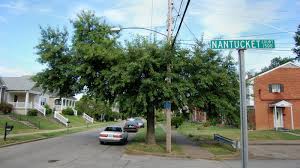 Grade Level: 6-12
Grade Level: 6-12
Duration: 5 minutes 36 seconds
Description: In this story from NPR, students will learn about tree cover as a way to cool down cities and that low-income urban communities often have fewer trees and thus experience higher temperatures. Additionally, the story covers the factors that stand in the way of efforts to plant more trees in these areas but the importance of doing so.
As Rising Heat Bakes U.S. Cities, The Poor Often Feel It Most
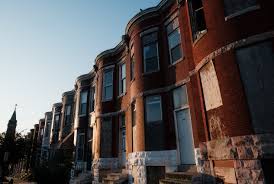 Grade Level: 6-12
Grade Level: 6-12
Duration: 8 minutes 16 seconds
Description: This NPR story discusses heat in cities and what factors contribute to the problem of urban heat islands. Students will learn how intense heat in cities causes health problems and especially affects the urban poor. Additionally, the podcast discusses solutions to combat this issue such as installing reflective roofing and planting trees.
Racist Housing Practices From The 1930s Linked To Hotter Neighborhoods Today
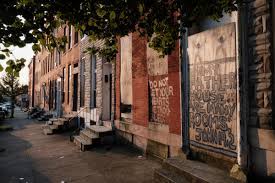 Grade Level: 4-12
Grade Level: 4-12
Duration: 3 minutes 23 seconds
Description: This NPR story discusses how racism and redlining have led to higher temperatures in minority neighborhoods today. Students will learn about the impacts that these higher temperatures have on communities of color.
Games/Activities:
Connecting Ecosystems and Human Health
 Grade Level: 4-12+
Grade Level: 4-12+
Duration: 60-90 minutes
Description: These handouts/lesson plans provided by the Environmental Protection Agency (EPA) each feature various activities designed to teach students how environments can impact human health. Educators can connect the ideas presented in these handouts and activities to the idea of environmental justice by having students consider those who live in areas where environmental factors harm their health and well-being.
Environmental Justice in Your Community
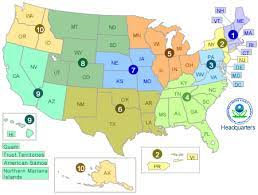 Grade Level: 6-12
Grade Level: 6-12
Duration: Varies
Description: This interactive map from the Environmental Protection Agency(EPA) allows students to see the agency’s environmental justice projects in different regions of the United States.
Environmental Justice Atlas
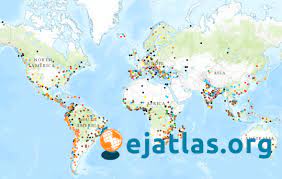 Grade Level: 9-12
Grade Level: 9-12
Duration: Varies
Description: This online atlas allows students to explore how environmental injustice affects communities in the U.S. and all over the world. Students will learn what places have environmental conflicts and how communities are impacted by these environmental struggles. Some of the conflicts the map displays have to do with waste management, water management, and biodiversity.
EJSCREEN EPA's Environmental Justice Screening and Mapping Tool
 Grade Level: 9-12
Grade Level: 9-12
Duration: Varies
Description: This tool from the Environmental Protection Agency (EPA) allows students to see how certain environmental hazards affect different demographics. By clicking on map demographics, students can locate the areas where certain groups of people live and then add layers to the map such as mapping hazardous waste sites and sea-level rise to see how some communities are more affected by these environmental hazards than others. Students may notice trends in the map, such as more hazardous waste sites being placed in low-income areas.
